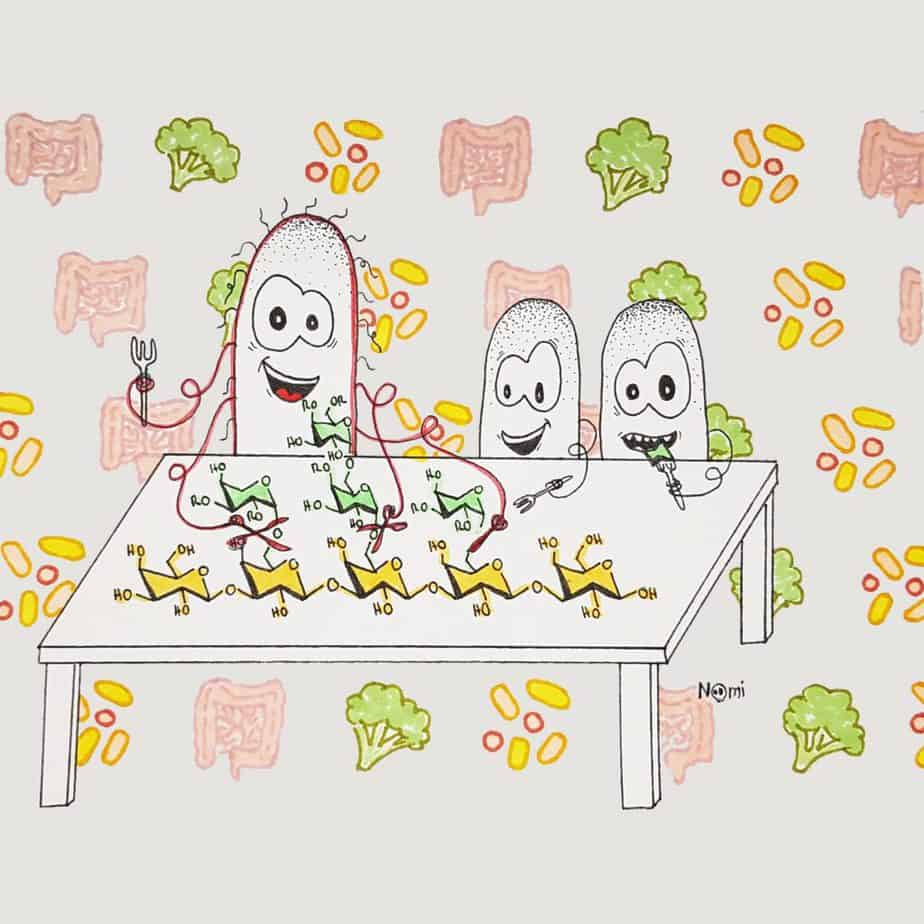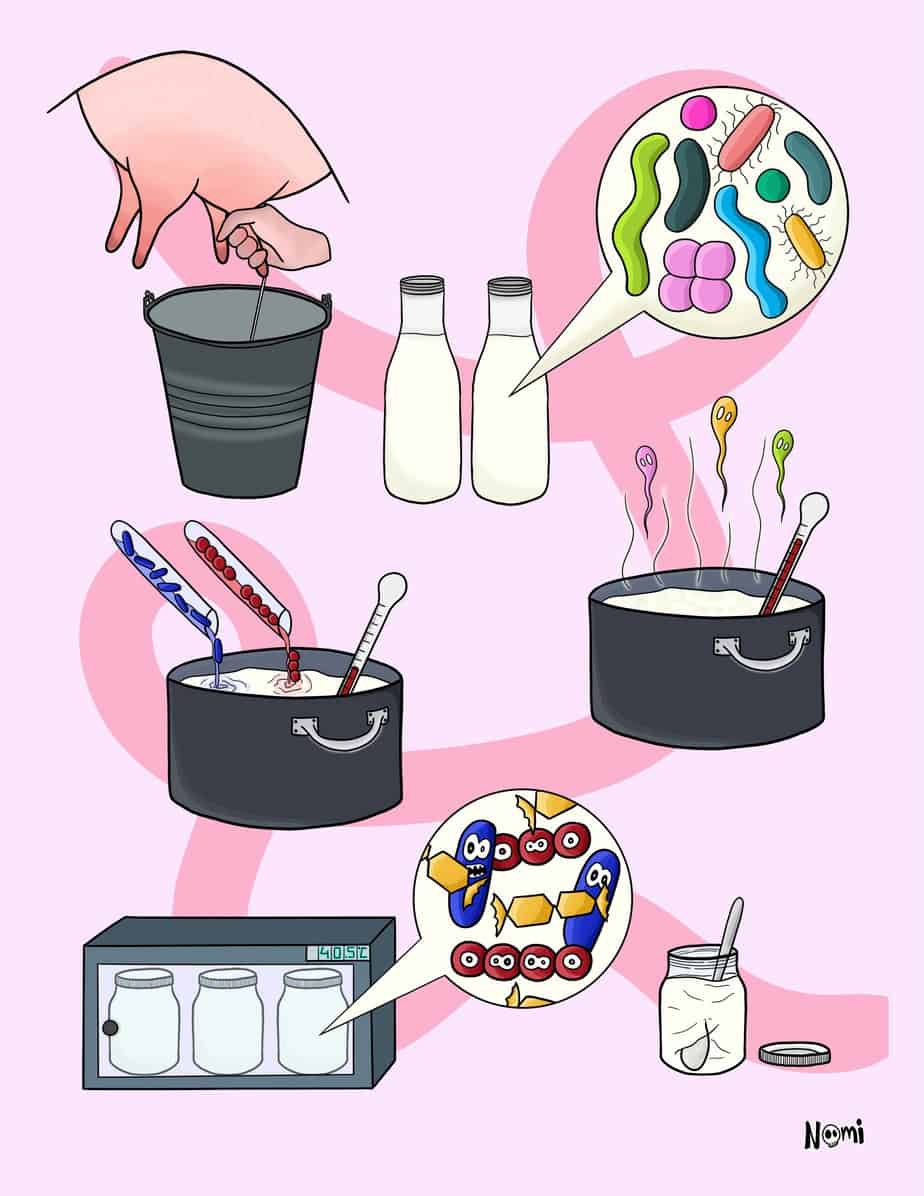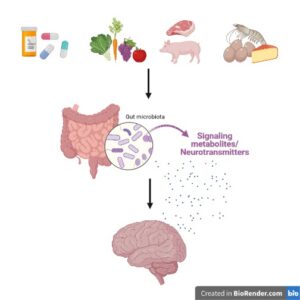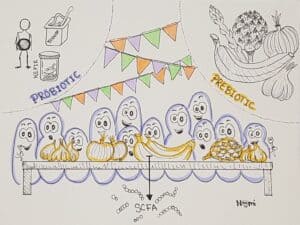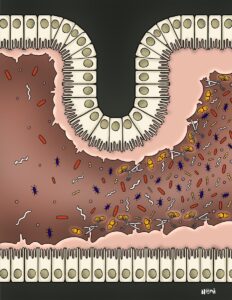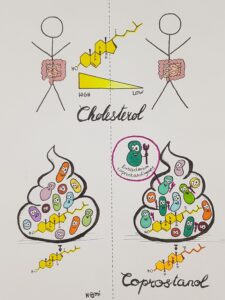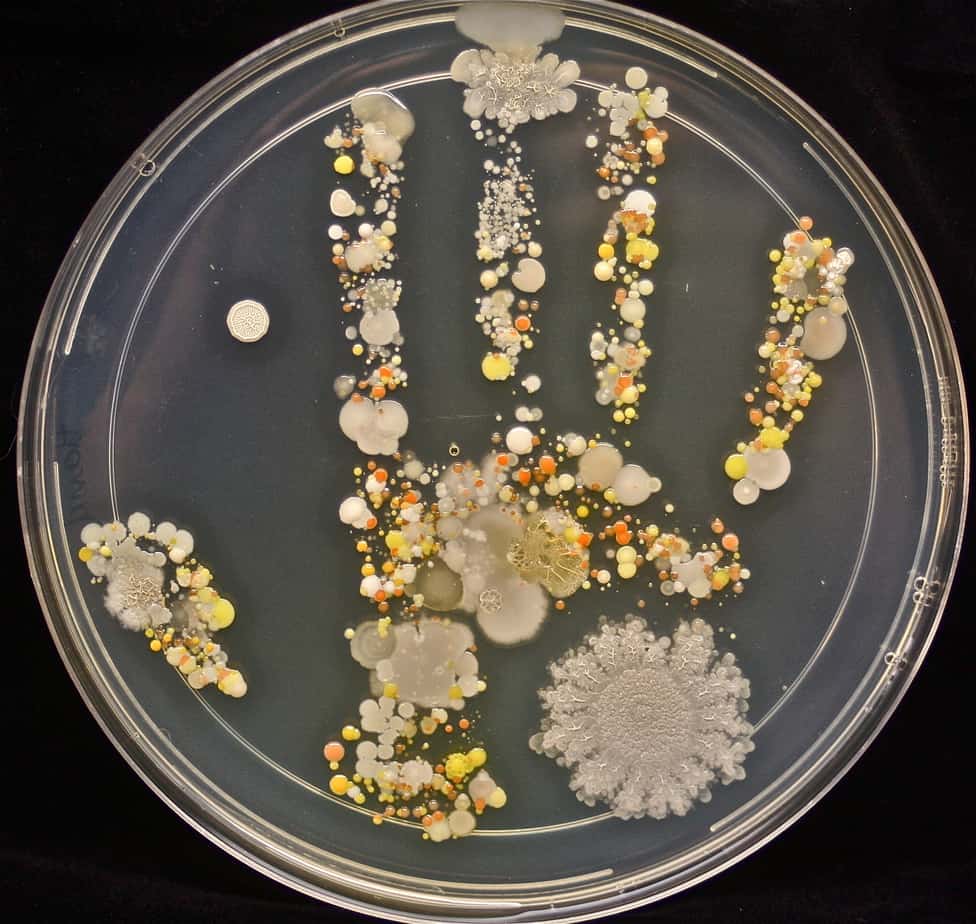Can you imagine how bacteria in your gut sit together at a table and share their food leftovers with each other?
No, but this is pretty much what happens there.
Okay, they might not sit at a table with napkins in their laps and fork and knife in hand. But bacteria do share food with each other and even feed each other with their leftovers.
Not sure, how that might work?
Read on to find out!
What’s in your plant food?
If you are like most people and eat a healthy balanced diet, you will probably eat a lot of plant products, including vegetables and fruits.
But think about what plants are actually made of: Their cell walls are extremely rigid and sturdy because plants need to be stable to withstand different weather conditions. So, to stabilise a vegetable or fruit, they have complex walls that we can barely digest.
And yet, they are some of the best foods you can eat…
While our own digestive system is struggling to break down plant material, we can always rely on the microbial friends in our guts. They have the necessary tools and superpowers to break up plant material, digest plant food and help us get the best from it.
But none of them can do it on their own. Also, bacteria work together and share their food to achieve that.
Let’s look at how food-sharing works between bacteria and which plant components they are digesting for us.
Arabinogalactan – a complex glycan from plants
To stabilise plant cells and make them sturdy, long and complex molecules are part of most plant cells. These are often glycans that are complex polymers with one main chain and many different side-chain branches.
And one of these complex plant glycans is arabinogalactan – or short AG.
AG consists of very long main chains made of the same sugar molecules. And each sugar molecule consists of a ring of 5 carbon atoms. Now, these carbon atoms link to carbon atoms within the same sugar but also to carbon atoms in the next sugar.
So, within the main chain, the sugars are all linked to each other via the so-called 1,3-bond. This means, that the carbon atom at position 1 links to the next sugar molecule via the carbon atom at position 3. And between these two carbon atoms sits an oxygen atom.
Okay, so far for the main chain.
The side chains consist of different sugar molecules. Hence, the bonds between them are different.
Plus, the side chain is connected to the main chain via a different bond – the 1,6 bond. This means, that the carbon at position 1 from the sugar molecule of the side chain binds to the carbon at position 6 of the sugar molecule of the main chain.
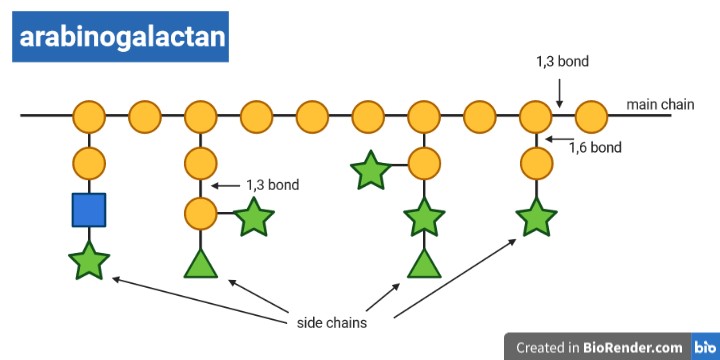
Since these side chains have different lengths and lots of branches, the structure of the AG gets so complex. This is what ultimately makes it so difficult for our digestive system to break them down. We just don’t have the tools for that.
Enter our microbial friends in our guts.
Bacteria degrade complex plant polymers
Since this complex AG polymer is basically in every plant cell, we are eating a lot of it. And somehow we seem to be able to digest it. So, researchers were curious about what happens to this glycan in our guts.
And they knew already, that bacteria in our guts have really cool tools and scissors to break up complex plant sugars and glycans.
This scissor sits on the outside of a bacterium. Here, it directly chops off a piece of sugar when it comes into contact with a plant polymer.
And directly next to the scissor sits a transporter. This immediately takes the chopped off sugar molecule and imports it into the bacterium. Now, the bacterium uses this piece of sugar for energy and growth.
One of the bacteria that break down AG in our guts is Bacteroides cellulosilyticus. Let’s call this one the Bacell-bacterium.
These Bacell-bacteria have special scissors that cleave off the side chain of AG from the main chain. Plus, they have another set of scissors to chop off the last sugar molecule from the side chains.
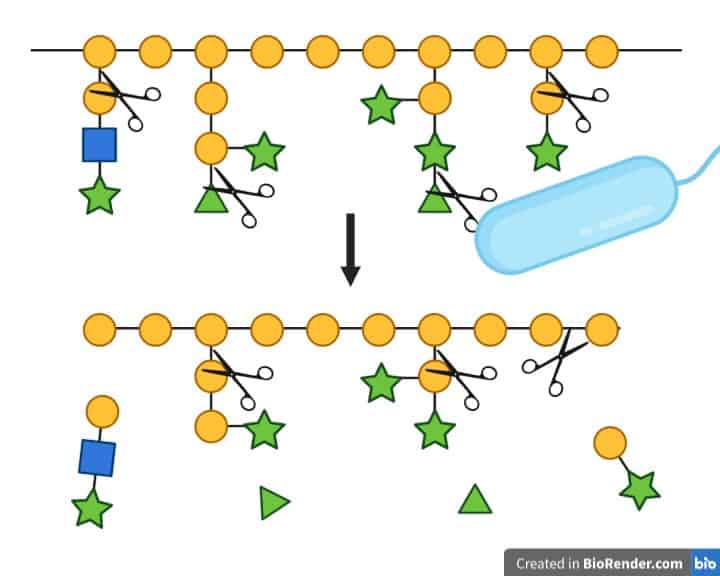
However, they cannot break up the rest of the side chain. Hence, this leaves some valuable sugar chains lost in the deepest corners of our guts.
But gladly, other bacteria pick up these yummy sugar sources and are grateful for that share of food.
Bacteria get their share of food
Researchers found that the bacterium Bifidobacterium breve uses these released sugar chains. Let’s call this bacterium the Bif-bacterium.
Generally, the Bif-bacterium does not have these advanced scissors to break down complex glycans. But it can pick up and degrade released sugar chains from other bacteria.
Researchers found that when they fed the Bif-bacterium with AG, it did not grow alone. However, they then added the Bacell-bacterium and fed them with AG. Now, the Bif-bacterium was growing.
This meant that the Bacell-bacteria break down certain pieces of the AG and share the leftover food with the Bif-bacteria. Since Bif-bacteria have the right scissors to break down smaller sugar molecules, they can use these now and grow.
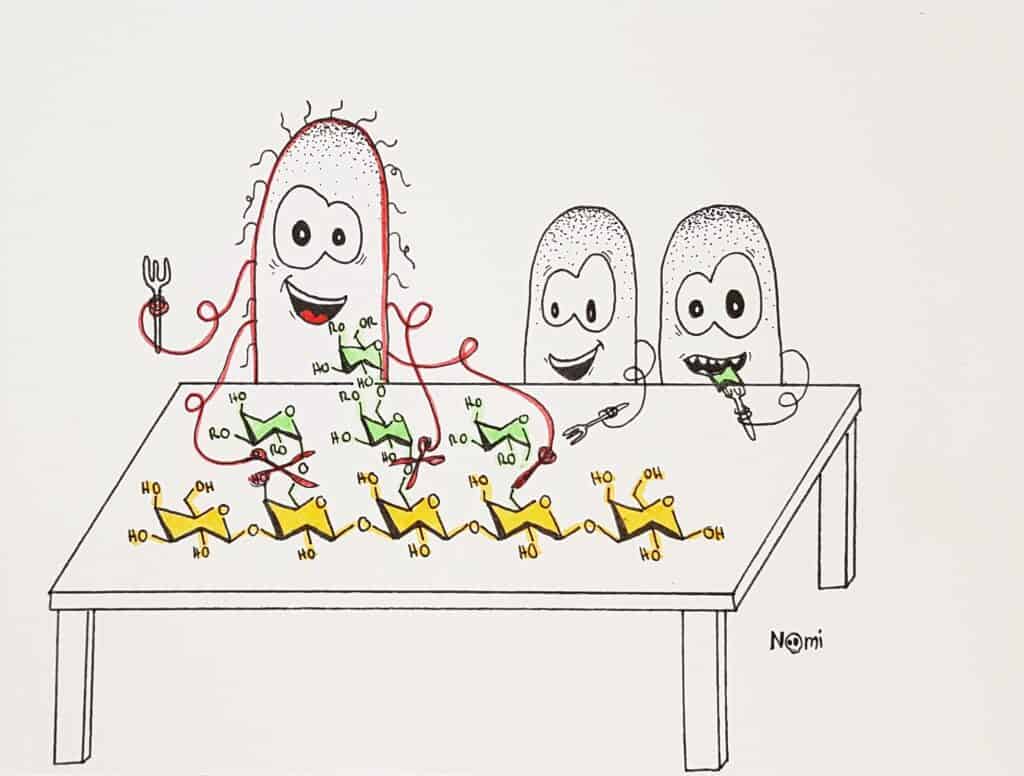
Next, the researchers looked at what both bacteria produced from the AG.
Bacteria share food with each other and keep us healthy
They found that the Bacell-bacteria alone produce some short-chain fatty acids from the AG. These short-chain fatty acids are very helpful for our body and keep us healthy.
Yet, when the Bif and the Bacell-bacteria grew together with AG, they produced even more diverse short-chain fatty acids. This meant that the interaction between the Bif- and the Bacell-bacteria itself can be understood as a probiotic – they are healthy for us. And it also means that AGs are prebiotics – they feed healthy bacteria.
Interestingly, also other bacteria get their piece from this interaction: The probiotic bacterium Lactobacillus reuteri (Lacto-bacterium) also plays a role in sugar degradation in our guts.
The Bif-bacterium produces a molecule called 1,2-propanediol from AG. Now, the Lacto-bacterium can pick up 1,2-propanediol and make more short-chain fatty acids from it. And this also helps the Lacto-bacterium grow and keeps our gut healthy.
So, when bacteria share food with each other, everyone wins!
Help your bacteria share food and you keep yourself healthy
From this little story, I hope it became clear again, that you are what you eat. By giving your bacteria the right food, they can feed each other so that they grow. And when the right bacteria grow in your gut, they will defend you against harmful pathogens and keep you healthy.
So, yes, keep being nice to your bacteria! ?

